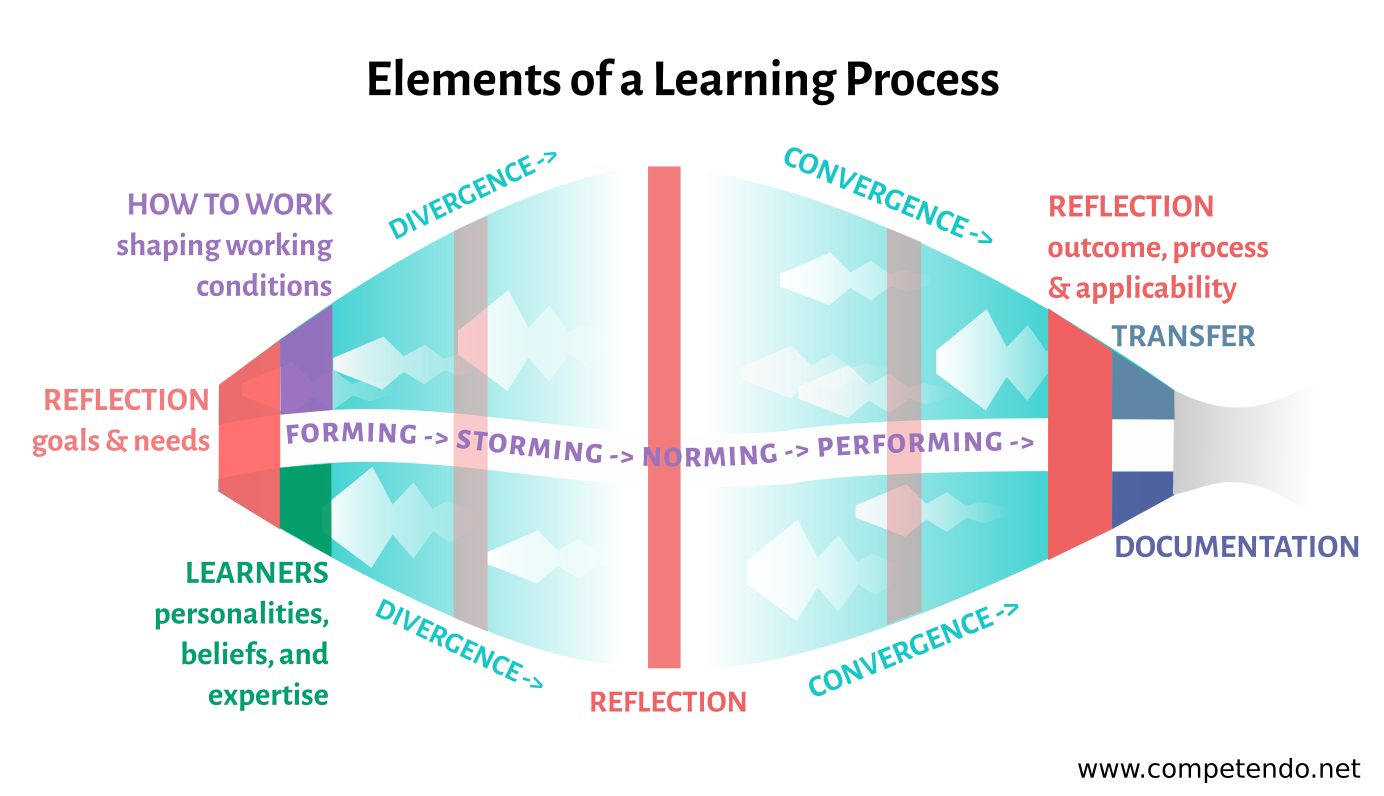You, your institution or school and your participants have different preferences and expectations regarding the common learning process. Planning is the art of considering the diversity of stakeholders around a learning and the diversity within a group in all its qualities, while ensuring that all of its parts gain from it.

A learning process is consisting on the standard elements described in detail in the During section. No matter if a learning event is taking place several days, some hours, or only one hour, the working conditions need to be clarified, or learners need to be able to involve their qualities, curiosity and expertise. As well they need at several stages of a longer process opportunities to reflect on their questions, or assess their learning. Similar at the end of the process a final reflection should take place, now more focusing on the learning outcome, its relevance for their future and on the evaluation of the past learning process. At the end the learning outcome or competency development needs to be documented and described by learners or facilitators.
When looking from above on the whole training we often see a dialectical process characterized by an alternation between a divergent and a convergent phase. Usually at the beginning of a training or seminar a lot of impressions appear, several topical aspects come into front, learners develop curiosity and try to connect things. This divergent phase is followed by a more convergent phase, oriented toward a concrete goal, finding or product. The interaction between convergent and divergent thinking is as well visible on the micro-level and therefore needs to be considered in planning. The variation of methods allowing creative thinking are needful steps in order to come up with an inspiring concept..
This is a proposal for a planning method of a workshop with the goal-content-method matrix, which helps a facilitator create a clear logical structure of the learning sessions. One gains more efficiency, transparency and flexibility when making a distinction between the absolute prior goals and the methods we use on the way to achieve these goals.
Imagine your participants’ needs are represented by a hand with five fingers. Each finger stands for a different type of need: 1. Social, 2. Physical, 3. Intellectual, 4.Emotional and 5. Spiritual. In your seminar there should be a space for covering all five needs.
The Case Study shows, how organizing a small local project can lead to the development of skills, competencies and knowledge in the organizers and the target group. Including a template for your training.
Key Competencies are abilities learners might use in a broad range of social contexts - in social participation, as employees, in their way to express their culture or for their personal development. This task helps teams and organizations to identify their key competency profile including the competencies learners, visitors or participants might learn during their activities.
Learning styles are different and when using merthods, that address different senses or ways of expression we may have a bigger impact on our participants, so that everybody feels attracted, although not everybody from the same methods. Therefore we advocate for a mix of activity/cognition, creativity/traditional learning, groupwork/individual work...
A successful international meeting keeps the balance between formal and informal, indoor and outdoor. It gives participants space for informal talks as well as to let them get enough air and get acquainted with the host country in organized and unorganized ways. Although international encounter requires a lot of organization from the facilittaors, this checklist helps to focus on the didactical aspects.
Using language is using power. Sharing power and empowering participants linguistical implies to reflect the language and materials you use and to apply it in a diversity-aware way.
It's not enough to say something, it is as well important, how you say it. In a call for application, in working texts in reports or promotion texts for public audiences we represent our values, and culture - as well as our stereotypes, presumptions or limitations. Therefore we want to motivate you, to use language precisely.
Find out more about your target group. The method will help listen, empathize, and make careful observations.
If we want to encourage the learners to work with and for the communities to initiate the social change, it is good to know the basics of the planning of the community work. Here the characteristics of the phases of planning community work.








